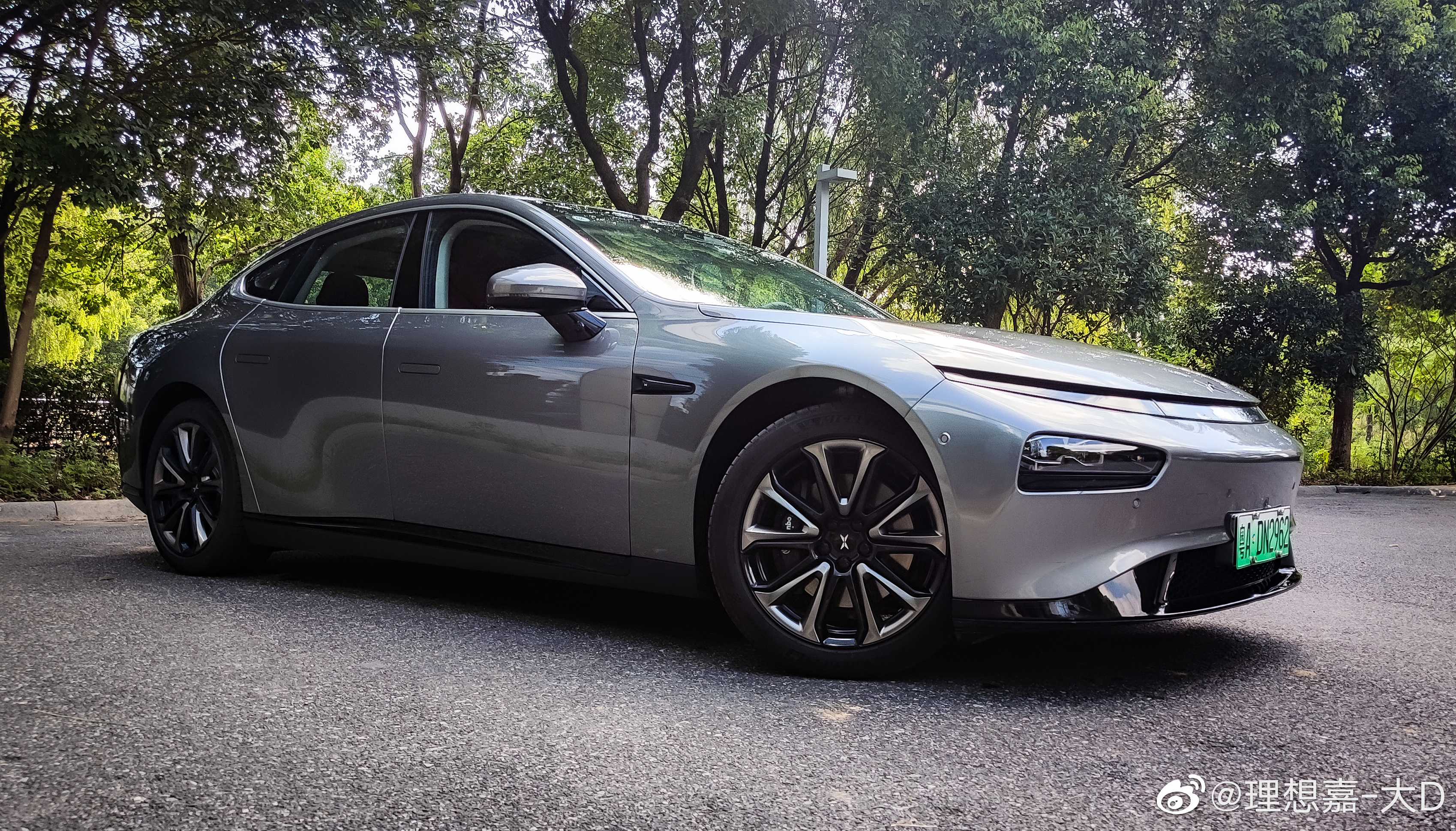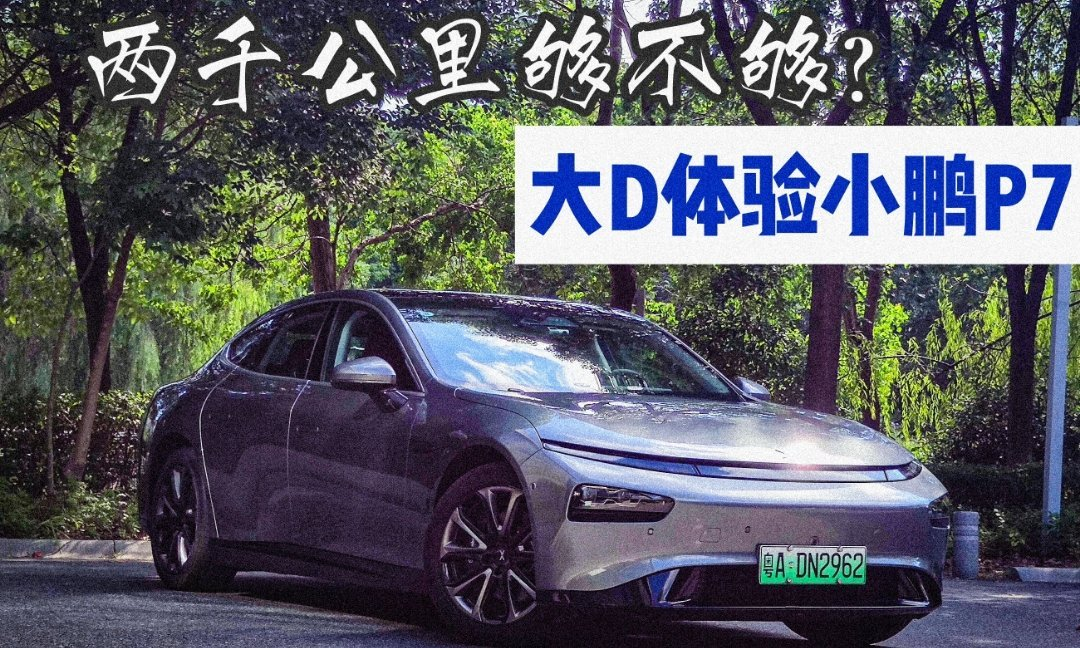I’ve been wanting to try out XPeng P7, especially its NGP navigation assistance system based on XP3.0. Thanks to @42号车库 and @小鹏汽车 for giving me the opportunity to test drive this XPeng P7 for nine days and 2000 kilometers.
Let’s talk about the range first
Many people think that electric cars are especially suitable for city commuting but are afraid of long-distance drives. I purposely arranged a long-distance trip this time from Jiaxing, Zhejiang to Fuzhou, Jiangxi, which I have to make many times each year. The one-way distance is about 600 kilometers and I have previously driven both the Ideal ONE and NIO ES6 for this trip. Finally, the XPeng P7 set off with full battery, charging for 31 minutes (adding 270 kilometers) midway, and took 7 hours and 20 minutes, which is basically similar to the time of the Ideal ONE. For the same 70-degree trip, the NIO ES6 took more than eight hours each time (because it needs to charge twice midway).
After actual testing, it is possible to drive 450-500 kilometers of high-speed range from Zhejiang to Jiangxi on the Shanghai-Kunming Expressway. I only need to find a service area to charge after 350-400 kilometers. Moreover, the peak charging power of the State Grid charging pile at the service area in Jiangxi can reach 86 kW, and can be stabilized at 60 kW for a long time. Therefore, for this XPeng P7, which has a rear-wheel drive and an ultra-long endurance smart honor edition with an NEDC range of 670 kilometers, I can basically avoid range anxiety. The only problem is that during holidays, there may be gasoline-powered cars occupying charging stations and queuing situations, so I still dare not rashly go on long-distance trips.
The highlight of this test drive: NGP navigation assistance system.
First of all, let me state my conclusion: NGP is currently the best navigation-assisted driving system in China, with overall performance surpassing NIO’s NOA and even the mythologized Tesla FSD (China version).
The system’s ability to change lanes decisively, including acceleration-based maneuvers like veteran drivers, and its correction of direction when entering or exiting the highway ramp is also very good.
The lateral control within the lane is relatively stable, which is stronger than the Ideal 2021. For example, when avoiding large trucks in the same lane, XPeng control of the vehicle is just right. If the 2021 Ideal meets a crosswind, it will make you very unconfident.
The system’s ability and strategy to handle special situations, such as identifying unclear lane markings, is stronger than other companies, and it won’t be clueless and fumble. Moreover, the advance preparation for handling side vehicle merging (cut-in) is also earlier. These details prove the strength of the XP3.0 hardware system.But on some highways, I will actively downgrade from NGP to LCC. The main reason is that NGP likes to change lanes too much. In most highways with large traffic flow, it is faster to stay in the first lane, but NGP will actively switch to the second lane as long as there is a gap, and often it cannot return for a while…
At present, the NGP system is still too dependent on high-precision maps. High-precision maps often have errors in speed limit restrictions and sudden loss of several hundred meters. I have encountered a section of the provincial toll station road that has been dismantled. Suddenly, the NGP speed limit jumped from 120 kilometers per hour to 60/80 kilometers per hour. At this time, although the vehicle did not brake urgently, it also slowed down sharply, almost causing a rear-end collision. I hope that in the future, with the addition of various types of LiDAR, the assisted driving system can gradually reduce its dependence on high-precision maps.
In the NGP/LCC/ACC state, with no vehicles ahead and at the maximum cruising speed, there is still room for improvement in the vehicle’s throttle control. Currently, this car can feel the rhythm of acceleration and deceleration, but if the driver is careful and sensitive, the overall experience is not good.
After the NGP state is manually changed, NGP can automatically recover, but after the LCC mode is manually changed, LCC does not automatically recover, and this logic needs to be directly discussed.
Although there are some flaws, Xiao Peng P7’s XP3.0-based assisted driving system is very powerful and is currently the most powerful in China.

Let’s talk about Xiao Peng’s intelligent car device system
What I like most here is the Xiao P voice system, which is currently the strongest in China, with no rivals against Tesla, NIO, Ideal, etc. Basically, I can control all car device functions through voice commands, and the probability of miswakeup is extremely low (Ideal ONE’s Ideal classmate has a high probability of miswakeup, NIO’s nomi is particularly cute, Tesla…). The recognition ability of specific language statements is also very powerful. I can reveal that the progress of the Ideal classmate currently in internal testing is very impressive. I think it has the power to compete with Xiao P.
The map system is average and feels between Ideal and NIO/Tesla. It is not very convenient for displaying multiple route switches.
The cooling capability of the air conditioning system is very strong, but the air outlet mode cannot be memorized and needs to be adjusted separately every time. (Maybe the hidden air outlet shape and position affect the softness of the air flow. Directly blowing on the arm is a bit uncomfortable.)
Xiao Peng P7 supports an app store, and car owners can download many APP software to expand the functions of the device. However, many software feels like it is a tablet version transplant and has not been optimized for the car device. For example, the APP I use, called “DaDao,” opens and immediately displays a large popup window…
With its long range capability, excellent assisted driving system and outstanding voice car system, the more I look at the design of the Small P7, the more I like it. It has a unique aesthetic style that makes me feel that the two-thousand-kilometer experience is not enough. I might actually buy one for long-term use.
This article is a translation by ChatGPT of a Chinese report from 42HOW. If you have any questions about it, please email bd@42how.com.
